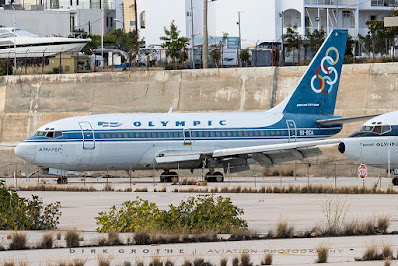sábado, 31 de outubro de 2020
IAI Delivers First Converted B737-700 Cargo Aircraft to Tianjin Cargo Airlines in China
Cargo conversion of the Boeing B737-700 is now available to meet the growing demand for cargo aircraft
IAI's Aviation Group has delivered the first Passenger-to-Cargo converted Boeing 737-700 to Chines airline - Tianjin Cargo Airlines, which will become the first operator of this type of aircraft in China. The conversion work was carried out at the Tianjin MRO site, under a partnership agreement with IAI and Haite Group for developing the B737-700 and B737-800 STC. The two companies have been working together since 2017, to meet the increasing demand for cargo aircraft in China, and around the world.
With the rise of e-commerce and the resulting higher demand for cargo aircraft, together with the effects of the COVID-19 pandemic, cargo aircraft have become the lifeblood of the Chinese economy. In recent years, most narrow-body cargo aircraft were based on the Classic Boeing 737 family, in particular the 737-400 model. As the Classic models are nearing the end of their lifecycle, they are being replaced by the Boeing 737 NG (New Generation) with the B737-700/800 models. These aircraft provide improved performance, avionics, and fuel consumption.
The Aviation Group is one of the only companies in the world that offers specialized conversions and certification of passenger aircraft into cargo configurations. The Group boasts over 40 years of experience in this area, and serves major cargo shippers such as Amazon, UPS and DHL.
The Tianjin MRO is a leading maintenance, repair, and overhaul provider in China and the collaboration between IAI and the Haite Group is expected to grow to meet the increasing demand for cargo aircraft.
IAI’s Executive Vice President and General Manager of Aviation Group, Yossi Melamed, said, “IAI’s Aviation Group has been leading the passenger-to-cargo aircraft conversion market for 40 years. We are committed to developing the next generation of cargo aircraft conversions ahead of the competition. The delivery of the first New Generation B737-700 to Chines operator is a significant milestone in our relationship with the Haite Group. I am confident that together we will lead the aircraft conversion market in China and around the world.”
In the picture: 737-700 BDSF (Photo by: Haite Group)
ANA to launch new airline in rejigged business model
ANA Holdings has set out a series of measures towards what it calls a new business model to survive the current crisis and position it for future growth, including launching an as-yet-unnamed “third airline brand” and retiring 35 aircraft in 2020.
The new carrier will be launched “around fiscal 2022” and will “raise profits by targeting demand for low-cost, medium-haul flights to destinations in Southeast Asia and Oceania,” the group explained in a statement on October 27.
“By using the current [restarting ANA charter wing] Air Japan (NQ, Tokyo Haneda) as the foundation, the brand will be capable of responding to sudden changes in demand and begin operations quickly after its establishment. Low unit cost operations will be delivered through the utilisation of the B787 aircraft configured with 300+ seats,” it added.
Low-cost unit Peach Aviation (MM, Osaka Kansai), meanwhile, will be tasked with “expanding the customer base to business passengers and families”, enter the air cargo business together with ANA - All Nippon Airways (NH, Tokyo Haneda) and ANA Cargo, and expand to “medium-distance international routes” with new A321LR aircraft. According to the ch-aviation fleets advanced module, Peach currently operates thirty-five A320-200s and one A320-200neo, with seven more A320neo and two A321-200NX(LR)s on order.
The mainline carrier itself will downsize its fleet by retiring “large-sized” aircraft. It will shed a total of 35 aircraft in 2020, up from seven previously earmarked, of which 22 will be B777s, it said without elaborating. ANA currently operates a widebody passenger fleet of twenty-three B767-300(ER)s, seven B777-200s, twelve B777-200(ER)s, seven B777-300s, twenty-eight B777-300(ER)s, thirty-six B787-8s, thirty-six B787-9s, two B787-10s, and two A380-800s.
The group said its new business model is based around the idea that business travel demand “will decrease and likely not fully return to previous levels due to changes to the nature of work,” while “demand for leisure and visiting friends and relatives (VFR) will likely continue to remain robust.”
It will further cut costs by downsizing and consolidating offices and by dissolving “unprofitable” assets such as the Miami-based PanAM International Flight Academy, the only remaining division of Pan Am (1927) (PA, New York JFK) which shut down in 1991.
Without giving numbers, the group said it would reduce labour costs through “shifting outsourced business to in-house development and temporarily relocating employees internally and externally” in an effort to protect the workforce for future growth.
In a separate disclosure released on the same day, October 27, ANA Holdings reported an operating loss of JPY280.9 billion yen (USD2.7 billion) for the six months ending September 30, contrasting with a JPY78.8 billion (USD753 million) profit for the same period last year. It also forecasted a record operating loss of JPY505 billion (USD4.82 billion) for the year to March 2021.
ch aviation
Subscrever:
Mensagens (Atom)




















































